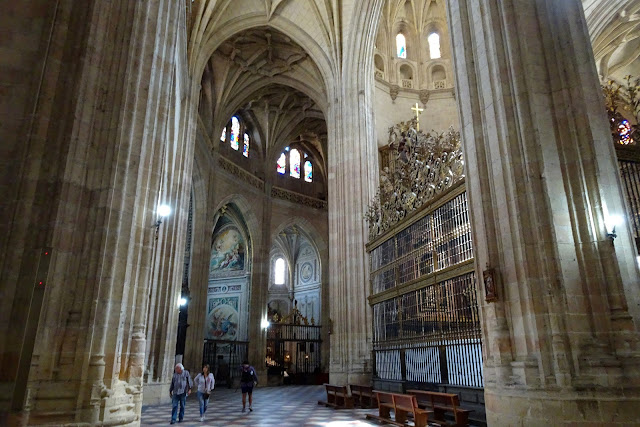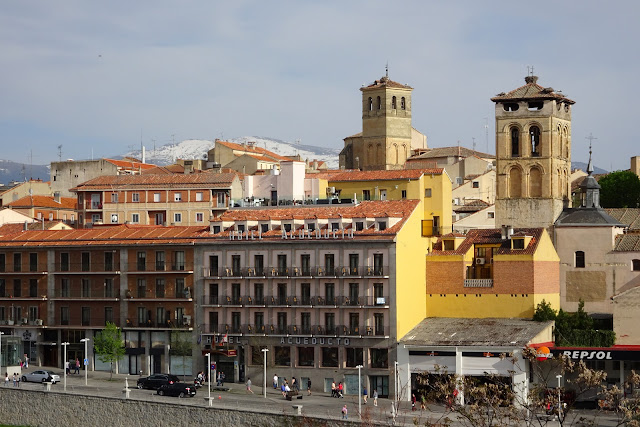W Czwartek(Wielki) 13 kwietnia wybrałem się do Segovii. Z
Las Rozas musiałem skorzystać z pociągu do Collado Villalba, a dopiero stamtąd
miałem połączenie do Segowii.
On Thursday
13 April I made a trip to Segovia. From Las Rozas I had to take a train to Collado
Villalba and from there I could take a train to Segovia.
Do Segowii dotarłem dopiero około 14, a ostatnie dostępne
połączenie powrotne było o 22, więc musiałem się trochę śpieszyć.
I reached
Segovia after 2pm and the last connection back was around 10pm so I was trying
to see it as fast as possible.
Pierwszym ważnym punktem turystycznym w Segowii jest
akwedukt zbudowany przez Rzymian około roku 100(https://pl.wikipedia.org/wiki/Akwedukt_w_Segowii).
First
tourist attraction in the city that I saw was the Roman Aqueduct from around
the year 100(https://en.wikipedia.org/wiki/Aqueduct_of_Segovia).
 |
| Av. Acueducto - prowadzi od dworca autobusowego do akweductu |
 |
| Casa De Los Picos |
 |
| Plaza de Medina del Campo |
 |
| pomnik Juana Bravo |
 |
| Iglesia de San Martín |
 |
| Plaza Mayor |



Późniejszym celem był Alcázar(Zamek) w Segowii. Wstęp kosztował 5,50€.
My next
destination was the Alcázar of Segovia. The entrance fee was 5,50€.

 |
| sufit |
Po wyjściu z zamku pokręciłem się próbując znaleźć zejście na dół samemu, ale w końcu zaufałem mapom w moim telefonie i znalazłem się u podnóża Alcázaru.
After leaving the Alcázar I tried to find my way down to get to the bottom of the castle myself but failed. Fourtnetly maps in my phone helped me to get there
 |
| Puerta de San Andrés |

Na koniec dnia trafiłem jeszcze na tradycyjną hiszpańską
procesje wielkanocną. Charakterystyczna cechą są członkowie procesji ubrani w spiczaste czapki capirotes, oraz
zespół z bębnami i instrumentami dętymi.
Before
leaving the city I a traditional Spanish Easter procession. The members wore
special hats called capirote. The procession also has a band with drums and horn
section.





















































































































Komentarze
Prześlij komentarz